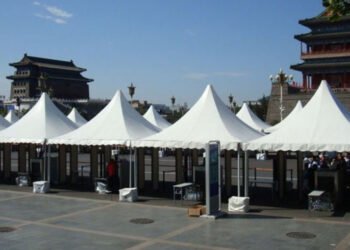Cycling through the urban landscape offers a unique blend of challenges and rewards. It’s not just about navigating the terrain but doing so with a flair that complements your personal style and ensures your safety. This guide is your compass in merging fashion with function, ensuring you stay safe on busy streets without compromising style. Here, we’ll explore essential gear, safety tips, and how to handle unforeseen incidents in your cycling journey.
Choosing the Right Gear: Safety Meets Style
Selecting the right gear for urban cycling is a fine balance between ensuring safety and expressing personal style. A helmet is non-negotiable, yet it doesn’t have to be mundane. Modern helmets are designed with both aesthetics and aerodynamics in mind, available in a variety of colors and shapes to suit any taste. For clothing, opt for pieces that incorporate reflective materials without compromising on design. Footwear should provide a firm grip on the pedals while being comfortable enough for long rides or when you need to walk. Waterproof and breathable materials in jackets and pants will keep you dry during unexpected downpours, making your ride more comfortable and reducing the risk of catching a chill.
Visibility on the Road: Lighting the Way
Adequate lighting is essential for early morning rides or evening commutes. The latest LED technology offers bright, energy-efficient illumination with various mounting options. Front and rear lights should be bright enough to alert drivers of your presence from a distance. Consider adding spoke lights or reflective strips to wheels for side visibility, creating a moving light display that’s hard to miss. Wearable lights, such as armbands or clip-on lights for your backpack, can further enhance your visibility. Experiment with positioning to find the best setup that ensures you’re seen from all directions without blinding fellow road users.
Navigating Traffic: Strategies for Safety
Urban environments require cyclists to be hyper-aware of their surroundings. Use bike lanes whenever available but remain vigilant for obstacles or parked cars that might block your path. Learn the art of defensive cycling—assume drivers may not see you and be prepared to react. Practice quick stops and swerves in a safe area to improve your reaction time. Familiarize yourself with the most common types of collisions in urban settings, such as the “right hook,” where a turning car cuts you off, and learn how to avoid them. Always ride with the flow of traffic, and avoid weaving between cars, which increases the risk of an accident.
Weather-Proofing Your Ride: Adapt and Overcome
The unpredictable nature of urban weather calls for versatile gear. A lightweight, packable rain jacket can be a lifesaver during sudden showers. Consider water-resistant shoe covers to keep your feet dry and gloves that offer both warmth and dexterity for colder months. Layering is key to adapting to temperature changes throughout the day; look for breathable fabrics that wick away sweat to keep you comfortable. Accessories like waterproof bags and fenders can also make wet weather rides more bearable, protecting you and your belongings from splashes and mud.
Maintenance and Inspection: The Pre-Ride Checklist
A bicycle in top condition is more reliable and safer to ride. Beyond basic checks, pay attention to tire pressure, which should be adjusted according to your weight and the ride conditions for optimal performance. Lubricate the chain regularly to prevent wear and ensure smooth gear shifts. Inspect brake pads for wear and replace them if they’re thinning. Learn how to adjust your bike’s fit to your body, as proper ergonomics can prevent discomfort and injury over time. Investing in a good quality lock and learning how to secure your bike properly can also prevent theft, an often overlooked aspect of urban cycling.
Accident Preparedness: Knowing Your Next Steps
Despite all precautions, accidents can happen. In the event of a collision, prioritize your safety and seek medical attention if needed. Document the incident and exchange information with any parties involved. While it’s a topic no cyclist wishes to dwell on, knowing who to contact for legal advice can be invaluable. A brief consultation can provide clarity on your rights and the next steps to take, ensuring you’re supported through recovery and beyond.
Building a Cycling Community: Support and Solidarity
The strength of a community can significantly enhance your cycling experience. Local cycling groups often organize rides that can help you discover new routes safely and improve your skills through shared knowledge. These communities can also be a great resource for finding the best local bike shops, mechanics, and even sales on gear. In an accident or theft, a strong cycling community can offer emotional support and practical assistance, from navigating insurance claims to lending spare parts or equipment.
Enhancing your urban cycling experience is a multi-faceted journey that combines safety, style, and community. Investing in the right gear, increasing your visibility, mastering traffic navigation, preparing for weather changes, maintaining your bike, understanding how to respond to accidents, and engaging with fellow cyclists create a more enjoyable and secure riding environment. Each pedal stroke brings with it the opportunity to explore your city from a new perspective, underscored by the confidence that comes from being well-prepared for whatever lies around the next corner. Embrace these principles, and let them guide you to a cycling experience that’s as rewarding as it is safe.












